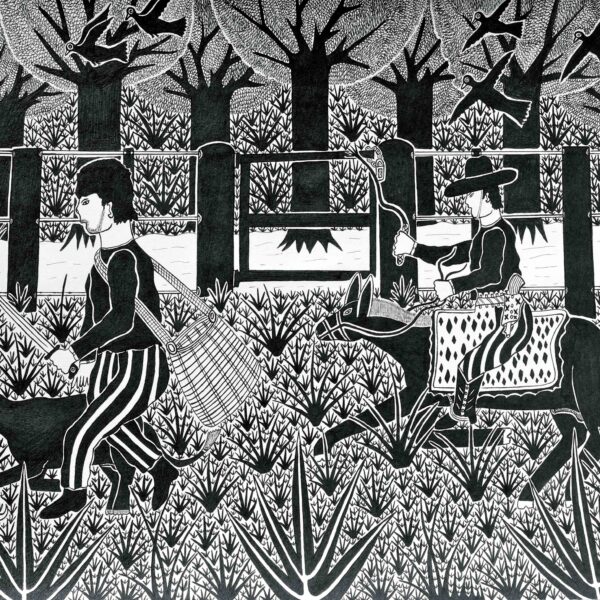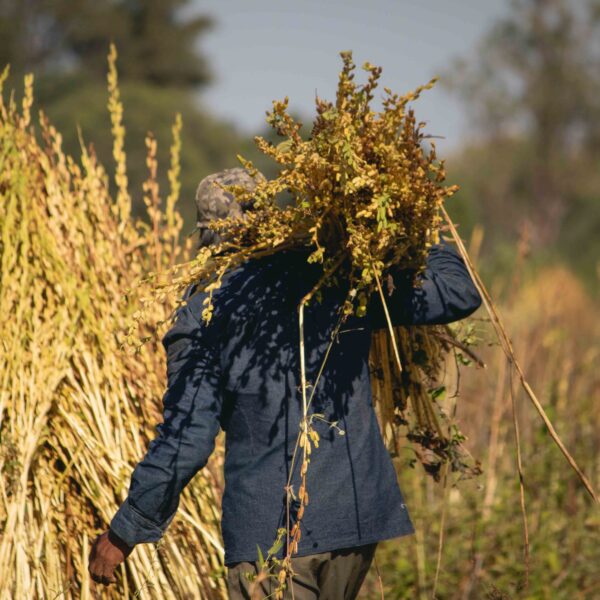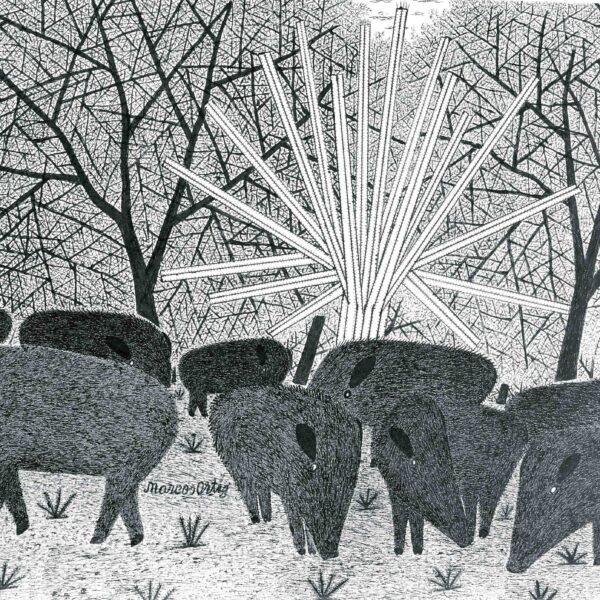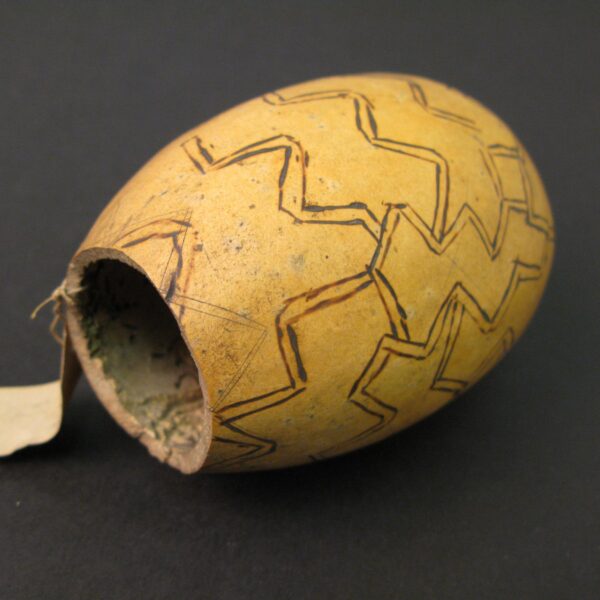Blog [EVENTO] Artistas paraguayos del Chaco presentarán obras inéditas en estudio abierto
A través de tres estudios abiertos online durante las próximas semanas, un grupo de artistas paraguayos presentará obras inéditas creadas como resultado de un proyecto con el Museo Británico donde interactuaron con más de 600 objetos provenientes del Chaco paraguayo nunca antes exhibidos.
‘Colección, misión, colonización: encuentros e historias entrelazadas desde el Chaco’ es un proyecto realizado en conjunto con SDCELAR y se inspira en esta colección que proviene principalmente del pueblo Enxet en el sur del Chaco, adquirida por los misioneros Wilfrid Barbrooke Grubb y Seymour Hawtrey a finales del siglo XIX.
Artistas, investigadores y curadores del Chaco paraguayo, han trabajado con el objetivo de desenredar y esclarecer el impacto de los procesos de misión y colonización en el Gran Chaco y mostrar una respuesta contemporánea local -con antecedentes enlhet, nivacle, guaraní y menonita- ante estos impactos que siguen existiendo.
En estos tres estudios abiertos online, los artistas presentarán sus obras y revelarán los fundamentos de su respuesta creativa a la colección del museo plasmada en grabados, fotografías, ilustraciones digitales y dibujos en lápiz de pasta.

'Exploitation' by Miriam Rudolph

© Efacio Álvarez

© Lantooy Unruh

© Jorge Carema

©Lantooy Unruh

'Roads' by Miriam Rudolph

© Lantooy Unruh

© Lantooy Unruh

© Marcos Ortiz

© Osvaldo Pitoe
En su serie de grabados Miriam Rudolph explora las complejidades de la colonización en la región del Chaco: “Pasé varios meses leyendo relatos de primera mano de misioneros, artículos de revistas y ensayos académicos, publicaciones de colonizadores menonitas e investigadores, así como narraciones de los ancianos indígenas sobre su proceso de desplazamiento, para recolectar información que luego fundamentó mis imágenes y se convirtió en parte del contenido a través de fragmentos de textos”.
Los artistas del colectivo indígena Artes Vivas -Osvaldo Pitoe, Jorge Carema, Efacio Álvarez, Marcos Ortiz, Esteban Klassen y Clemente Juliuz (1972-2021)- en colaboración con las antropólogas Ursula y Verena Regehr, crearon una serie de dibujos inspirados en los objetos de la colección. En ellos, rememoran las formas históricas vivir en el mundo de los pueblos chaqueños y muestran simultáneamente la vida contemporánea de los nivacle y guaraní.
Por su parte, el artista enlhet Lanto’oy’ Unruh declara que sus ilustraciones digitales y fotografías buscan mostrar la realidad de su comunidad: “Me parece importante dar visibilidad al pueblo que pertenezco, porque también estamos nosotros acá, mi pueblo indígena. Es en el contexto de esta correlación compleja entre el ver y el decir, entre la percepción y la expresión, que exploro formas de expresión y de creación de sentidos”.
Puedes leer más sobre las declaraciones de los artistas sobre el proyecto en este enlace.
Estudios abiertos
Los tres estudios abiertos serán transmitidos de manera gratuita y con traducción simultánea (español e inglés) a través de la plataforma Zoom en tres fechas, según cada artista. Para suscribirte a cada uno de los eventos, ingresa al link asociado.
Miriam Rudolph- Jueves 24 de marzo – 3 pm Paraguay (GMT-3)
Colectivo indígena ‘Artes Vivas’ – Jueves 31 de marzo – 1 pm Paraguay (GMT-4)
Lanto’oy’ Unruh – Miércoles 6 de abril – 1 pm Paraguay (GMT-4)
Sobre los artistas

Miriam Rudolph
Miriam Rudolph was born and raised in Paraguay. In 2003 she moved to Canada to study Fine Arts at the University of Manitoba where she graduated with a Bachelor of Fine Arts Honours in 2007 and a Bachelor of Education in 2010. She completed a Master of Fine Arts in Printmaking at the University of Alberta in 2017. She has received numerous scholarships, awards, and grants. She has shown her work nationally and internationally in Canada, the USA, Paraguay, Portugal, Spain, Croatia, Taiwan, and China. She is happily settled in Winnipeg with a home studio, a printing press, a big vegetable garden, her husband and child.

Osvaldo Pitoe
Osvaldo Pitoe, Jorge Carema, Efacio Álvarez, Marcos Ortiz, Esteban Klassen and Clemente Juliuz (1972-2021) are self-taught artists. They are members of the Guaraní and Nivacle linguistic groups and live in the Cayin ô Clim and Yiclôcat settlements on the outskirts of the Neuland Mennonite colony in the Paraguayan Chaco. Since the end of the 90s they have been drawing with black pens on paper and over the years they have developed their own styles and motifs. This new drawing practice emerged in collaboration with anthropologists Ursula and Verena Regehr, who have promoted this collective through exhibitions and publications in Paraguay and abroad. Read more about each of the artists in this link.

Lantooy Unruh
Lanto’oy’ Unruh (Paraguay, 1988), also known as Ronaldo Unruh, is an artist from the Enlhet Ya’alve-Saanga community in the Paraguayan Chaco. Through digital illustration, photography, oil painting, and video, he expresses his views on the importance of preserving the beliefs and traditions of the Enlhet community, and the natural environment. Some of his works are currently on display at the Museo del Barro in Asunción, and his illustrations have been published in the book ‘Sounds of the Rainforest’ (Alianza, 2019). He is also part of the Instituto Nengvaanemkeskama Nempayvaam Enlhet (‘Make our Enlhet language grow’), a space for reflection which promotes the Enlhet language and culture.




